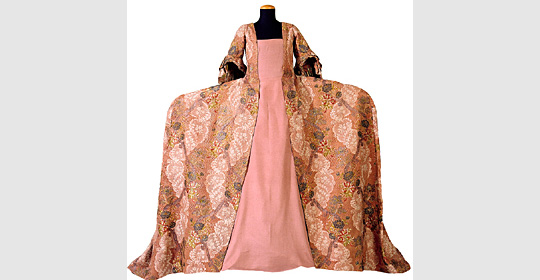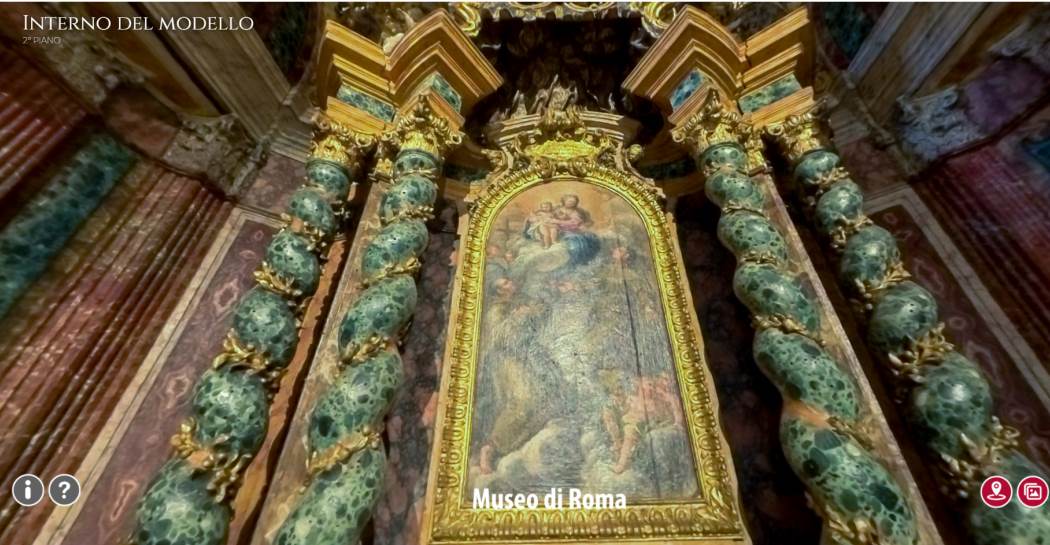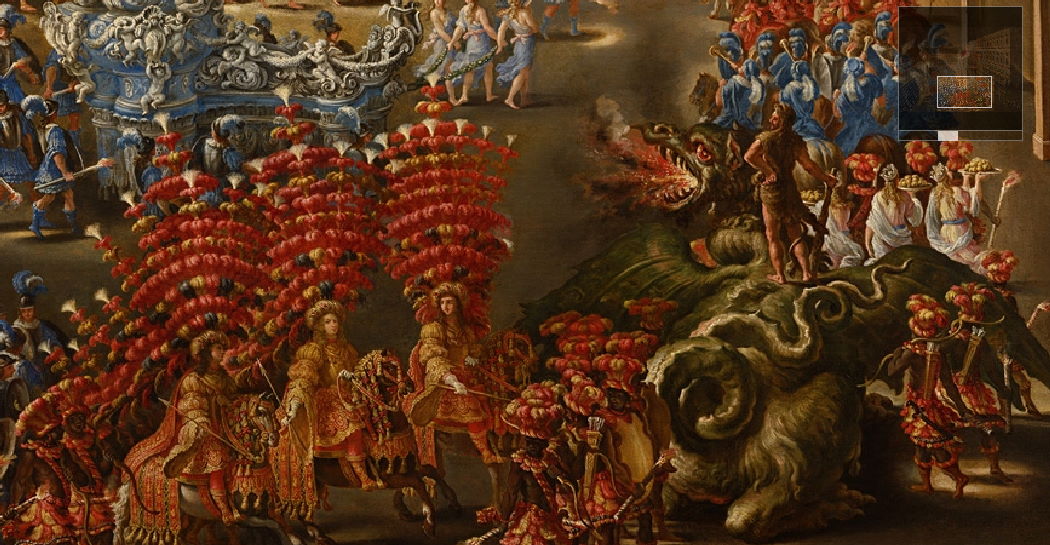Costumes and fabrics
Thanks to donations and purchases, about 250 historical garments, mainly dating back to the period between the eighteenth and the nineteenth century, were acquired by the Museum of Rome in the sixties.Of particular interest is a small exhibit of 18th century costumes which includes several andrienne - typical of the ladies' fashion in the mid 18th century and noted for its peculiar monumental shape; - some brocade jackets with rich floral patterns woven in polychrome silk and silver and gold threads; - many silk waistcoats and a number of tailcoats embroidered and ornamented with metal pailettes and coloured crystals; two outfits for men in silk taffeta. Dating from mid- nineteenth century, is a tartan taffeta dress with a flounced skirt and decorated with braid in matching colours. There are also various other dresses, suits and accessories, all fashionable in the late nineteenth and early twentieth centuries. Among these, a sumptuous dress fashioned in crêpe and silk satin, with draped skirt and train. Also on exhibit are various bodices and silk, velvet, chiffon, and cotton print blouses, edged with lace and embroidery.Considerable historical value must be placed on the collection of costumes that belonged to the Capitoline magistrates of mid- nineteenth century Rome and which were discovered in the Senatorial Palace on the Capitoline hill. At that time, conservatives and senators usually wore taffeta or damask tunics and gowns in summer and velvet robes in winter. They usually wore black, except on formal occasions, when they put on red and gold lamé dress costumes. They also wore a gold silk sash with tassels around their waist, a velvet hat and tasselled shoes. Pageboys dressed in yellow and red cloth and velvet outfits and wore a velvet hat with a feather - thus imitating, with some innovation, the fashion of the sixteenth century.Several church vestments and religious ornaments that once adorned the church at the University of Marmorari are now on exhibit in the Museum of Rome. These damask and brocade pieces , some of which are decorated with embroideries and braid of remarkable value, date back to the seventeenth and nineteenth centuriesAmong the various samples of fabrics, particular attention must be drawn to some fragments of Coptic origin, presumably dating from the seventh century and recognizable by their geometrical patterns, and a sixteenth century sample of ruby red cut out velvet on an ivory ground, depicting the pomegranate pattern .The Museum also has about two hundred wooden blocks for fabrics, which were used in the Roman textile industry at the end of the eighteenth century and in the nineteenth century. In the tapestry section one of the most valuable pieces is the ceiling of a canopy that was specially built for the Urbano VIII's throne room in Palazzo Barberini. It is decorated with the typical Barberini bees, according to a design by Pietro da Cortona.The Museum is temporarily exhibiting six Gobelin tapestries on loan from the Capitoline collections . They portray the famous series of the Seasons, with their child gardeners, created on the basis of Charles Le Brun's cartoons.Also on exhibit is a group of 57 tapestries, which the City of Rome ordered in 1902, during the administration of Mayor Ernesto Nathan, to decorate the buildings surrounding the Capitoline square. They represent the symbols of the various city districts, and are ornamented with elaborate festoons of plants and allegories with Latin inscriptions, woven on the basis of Erulo Eroli's cartoons, in the factory founded by the artist himself.














































